Introduction
Our cells separate the process of protein synthesis into two compartments: DNA is transcribed to mRNA in the nucleus, while mRNA is translated to protein in the cytoplasm. This separation allows additional regulatory steps to be added to the process, such as capping and splicing of the mRNA. The nuclear pore complex (NPC), a huge channel embedded in the nuclear envelope, connects these two separated processes, providing two-way transport of nucleic acids and proteins between the nucleus and cytoplasm.
The NPC is a huge molecular complex composed of hundreds of nucleoporin proteins. The symmetric core structure is composed of two outer rings that provide support and an inner ring that forms the transport channel. Specifically, the symmetric core (shown on the left) is composed of four classes of nucleoporins: coat, adaptor, channel, and POMs (not shown). Other less symmetric structures (not shown) manage molecules on both sides of the pore. The entire structure can transport about 1,000 molecules every second, ranging from proteins to entire ribosomal subunits.
Because the structure of the entire NPC is so large and dynamic, a “divide-and-conquer” approach has been used to study it. Atomic-resolution crystal structures of single nucleoporins and their subcomplexes have been determined individually, and maps of the entire NPC scaffold, detailed enough to see proteins but not individual atoms, have been determined using electron microscopy. This information has been integrated by docking the atomic structures into the electron density maps to elucidate the overall structure.
To learn more about the NPC, refer to the Molecule of the Month article.
Coat
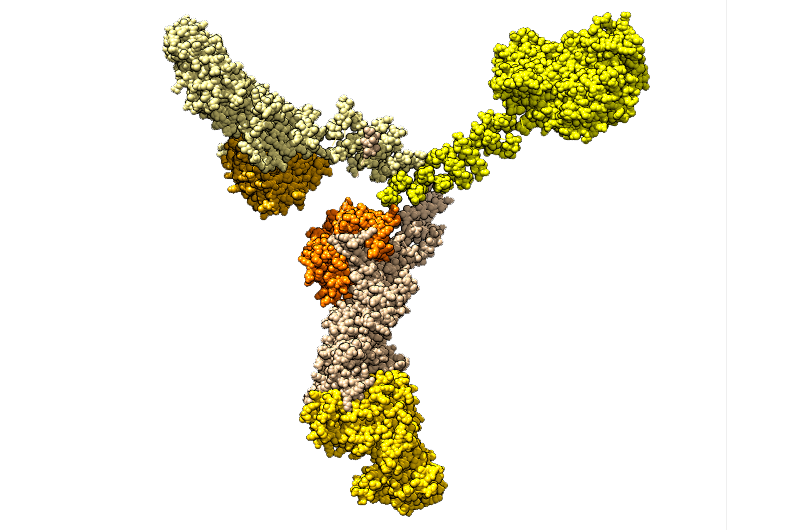
The seven yeast coat nucleoporins, Nup120, Nup85, Seh1, Nup145C, Sec13, Nup84, Nup133, assemble to form a Y-shaped heteroheptamer called the coat nucleoporin complex (CNC), shown here from PDB entry 4xmm; this structure excludes Nup133. 32 copies of the CNC assemble to form two eight-membered rings on both the cytoplasmic and nuclear sides of the NPC.
Mutations in Nup96 (human homolog of Nup145C) have been associated with changes in interferon response and B-cell/T-cell proliferation. Mutations in Nup133 have been associated with changes in neural stem and progenitor cell differentiation.
Explore structures of additional yeast coat nucleoporins in the PDB: Nup120, Nup85, Seh1, Nup145C, Sec13, Nup84, and Nup133.
Adaptor
 |
 |
 |
| mtNup1881-1160 (4kf7) | mtNup1881445-1827 (4kf8) | ctNic96 with CNT (5cws) |
 |
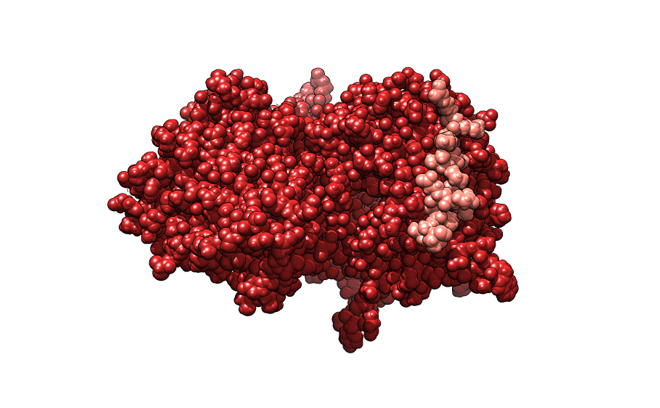 |
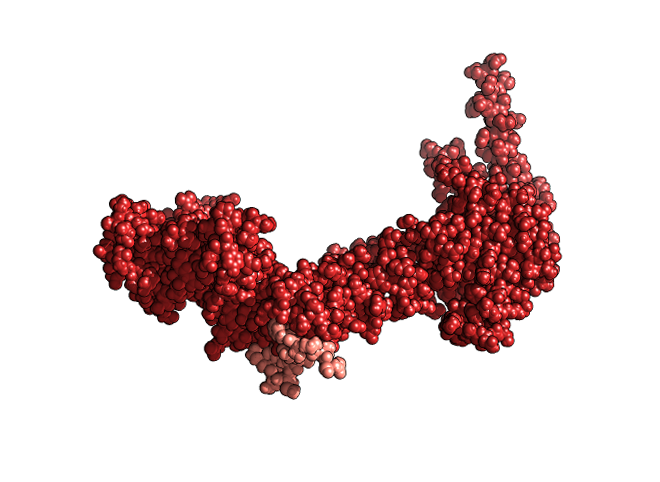 |
| ctNup188TAIL (5cwu) | ctNup170NTD-ctNup53 (5hax) | ctNup170CTD-ctNup145N (5hb0) |
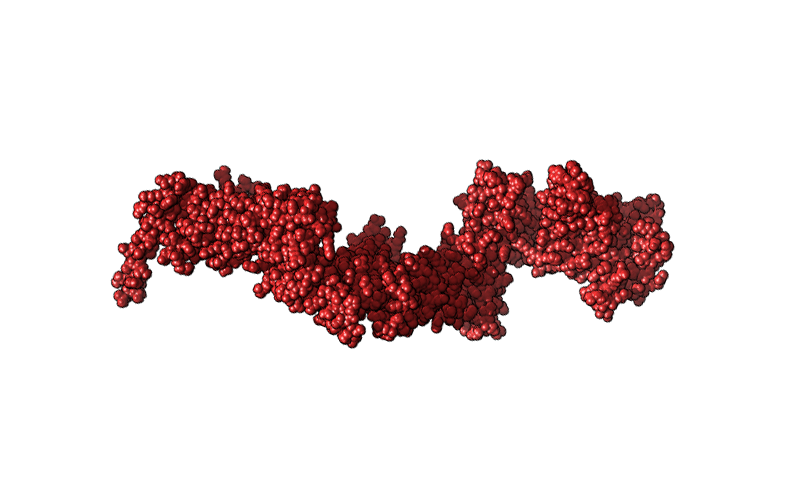 |
 |
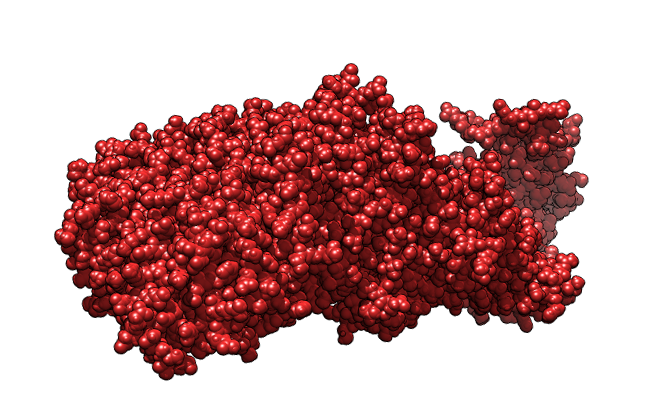 |
| ctNup170SOL (5hb1) | ctNic96SOL-ctNup53 (5hb3) | ctNup192 (5hb4) |
The adaptor nucleoporins are responsible for interacting with the other classes of symmetric core nucleoporins, including the coat nucleoporin complex, channel-nucleoporin heterotrimer, and POMs. Thus, the adaptor nucleoporins together function as the central component of the NPC.
Mutations in Nup155 (human homolog of Nup157/Nup170) have been associated with atrial fibrillation.
Explore structures of yeast adaptor nucleoporins in the PDB: Nup53, Nup170, Nup145N, Nup192, Nup157, Nup188, Nic96, and Nup59.
Channel
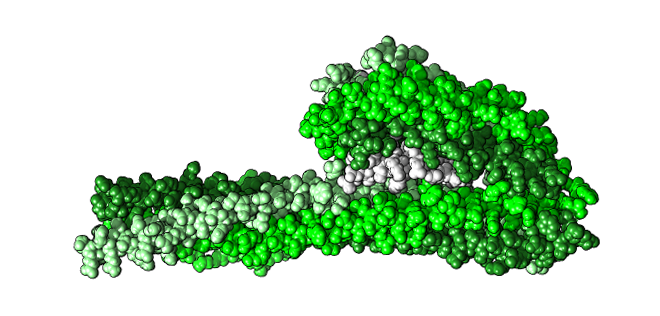
Along with the adaptor nucleoporins, channel nucleoporins constitute to form the inner ring of the NPC. Three channel nucleoporins (Nsp1, Nup49, Nup57) assemble to form the channel-nucleoporin heterotrimer (CNT) shown here from PDB entry 5cws. The CNT forms a portion of the inner ring complex through its interaction with adaptor nucleoporin, Nic96. The channel nucleoporins are primarily responsible for producing the NPC diffusion barrier due to its FG repeats that extend into the pore. This diffusion barrier regulates the passage of molecules through the NPC. Transport proteins called karyopherins are capable of carrying cargo through this diffusion barrier by interacting with the channel nucleoporins.
Mutations in Nup62 (human homolog of Nsp1) have been associated with primary biliary cirrhosis (i.e. autoimmune liver degeneration) and infantile bilateral striatal necrosis (i.e. degeneration of basal ganglia).
Explore structures of yeast channel nucleoporins in the PDB: Nsp1, Nup49, and Nup57.
About
The Nuclear Pore Complex educational resource was created by Christopher Markosian with the help of Dr. Stephen K. Burley and Maria Voigt during the spring of 2017. Christopher gained experience in the structural biology of the nuclear pore complex through his work in the Hoelz Laboratory at the California Institute of Technology as an Amgen Scholar during the summer of 2016. The utilized atomic structure of the NPC symmetric core is from the Hoelz Laboratory that is described in Lin et al., 2016. We would like to express our appreciation for the guidance from Dr. André Hoelz and Daniel Lin in the creation of this resource.
References
- Capelson, M. & Hetzer, M. W. (2009). The role of nuclear pores in gene regulation, development and disease. EMBO Rep. 10, 697-705.
- Grote, M., Kubitscheck, U., Reichelt, R., & Peters, R. (1995). Mapping of nucleoporins to the center of the nuclear pore complex by post-embedding immunogold electron microscopy. J. Cell Sci. 108, 2963-2972.
- Hoelz, A., Debler, E. W., & Blobel, G. (2011). The structure of the nuclear pore complex. Annu. Rev. Biochem. 80, 613-643.
- Hoelz, A., Glavy, J. S., & Beck, M. (2016). Toward the atomic structure of the nuclear pore complex: when top down meets bottom up. Nat. Struct. Mol. Biol. 23, 624-630.
- Lin, D. H. et al. (2016). Architecture of the symmetric core of the nuclear pore. Science, 352, aaf1015.
- Stuwe, T. et al. (2015). Architecture of the fungal nuclear pore inner ring complex. Science, 350, 56-64.




